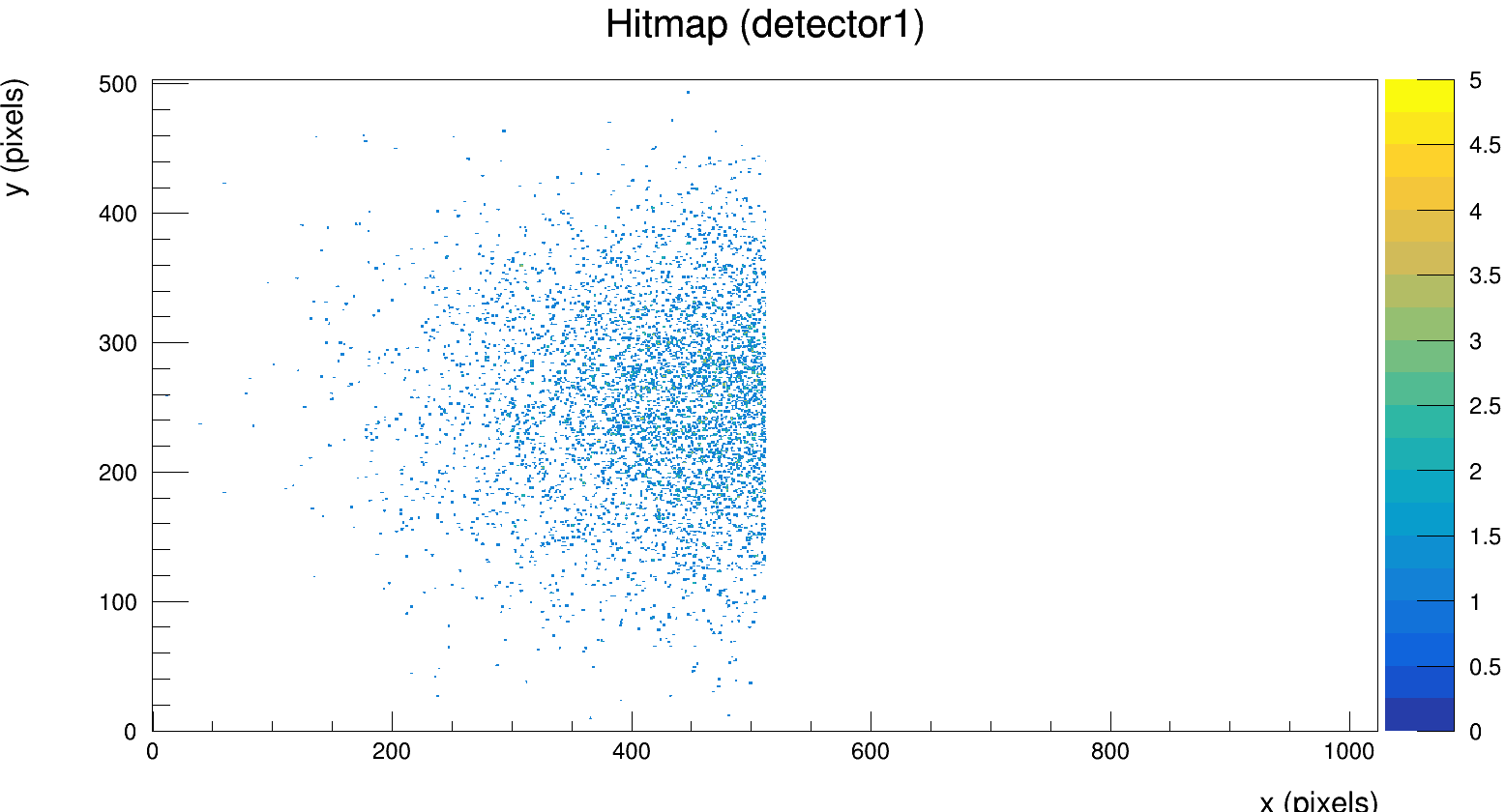Dear experts,
I tried to solve my issue by my own but failed so far…
I am trying to simulate the response of a CMOS Monolithic Active Pixel Sensor (ALPIDE like) to inclined tracks, meaning tracks with a defined angle. I am doing this by rotating the sensor with different angles (zero, 30, 45 and 60 deg), this is done in the geometry file by the orientation parameter.
Based on experimental data from beam tests, we expect that both the cluster size and the spatial residuals will increase with the increase of the angle of incidence. In my simulation, while this is true for the case of cluster size, it is increasing with the angle of incidence, I have some other issues:
-
The resdiuals are not gaussian shape, and not increasing with the angle. I tried increasing the number of events to 10000, still not gaussian and not increasing with the angle, see the picture attached.
-
Although the cluster multiplicity is increasing with the angle, like the data, still, the overall values are less than the values of the data. (I tried playing with the different parameters like the integration time and still I am getting less multiplicity)
-
If I see the hit map of the sensor in the case of rotated geometry, I can see hits only on half of the sensor. See the picture attached. (The rotation should affect the hit map but not in this manner, I think)
This is my config file:
allpix_config.conf (4.8 KB)
This is my electric field map: CERNBox
This is my doping profile: CERNBox
The model used is:
mimosis1.conf (452 Bytes)
The geometry used is like:
geometry.conf (78 Bytes)
I hope you can help me fix these issues.
Thank you and best regards,
Hasan Darwish

